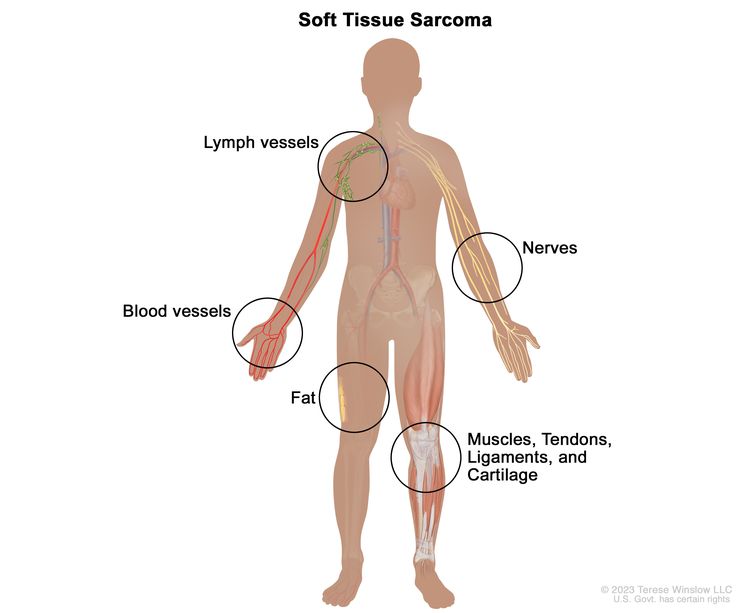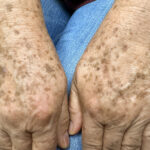Soft or connective tissue sarcoma refers to a diverse group of malignant tumors that arise in the soft tissues of the body, including fat, muscles, nerves, fibrous tissues, blood vessels, or deep skin tissues. Though relatively rare, sarcomas are complex cancers that require accurate diagnosis and tailored treatment strategies for optimal outcomes.

What Is Soft or Connective Tissue Sarcoma?
Soft tissue sarcomas are cancers that originate in the body’s connective tissues, which support, connect, or surround other body structures and organs. These tumors can develop anywhere in the body but are most commonly found in the arms, legs, chest, and abdomen.
Common Types of Soft Tissue Sarcoma
There are more than 50 recognized subtypes of soft tissue sarcoma, each with unique characteristics. The most frequently diagnosed include:
Liposarcoma
Originates in fat cells and typically affects the thighs or retroperitoneum.
Leiomyosarcoma
Develops in smooth muscle tissue and often appears in the uterus, abdomen, or blood vessels.
Rhabdomyosarcoma
Affects skeletal muscles and is more common in children and adolescents.
Synovial Sarcoma
Usually occurs near joints in the arms or legs and is more prevalent among young adults.
Malignant Peripheral Nerve Sheath Tumor (MPNST)
Emerges from the protective lining of nerves, particularly in those with neurofibromatosis type 1 (NF1).
Angiosarcoma
Forms in the lining of blood or lymph vessels and may affect the skin, breast, or liver.
Causes and Risk Factors
While the exact cause of most soft tissue sarcomas remains unknown, several risk factors have been identified:
- Genetic syndromes such as Li-Fraumeni syndrome, NF1, and familial retinoblastoma
- Radiation exposure, especially following cancer treatment
- Chemical exposure (e.g., vinyl chloride, dioxins)
- Chronic swelling (lymphedema)
- Certain viral infections, such as Kaposi’s sarcoma-associated herpesvirus (KSHV)
Genetic mutations in tumor suppressor genes or oncogenes play a pivotal role in sarcomagenesis.
Signs and Symptoms of Soft Tissue Sarcoma
Early-stage sarcomas are often asymptomatic. As the tumor grows, symptoms may develop depending on the location and size.
Common Symptoms:
- Painless lump or swelling that gradually increases in size
- Pain or soreness caused by the tumor pressing on nerves or muscles
- Restricted movement in limbs
- Gastrointestinal symptoms for abdominal sarcomas
- Skin discoloration or bleeding for superficial tumors
Persistent, unexplained swelling or pain should prompt further evaluation.
Diagnostic Process
Accurate diagnosis of soft tissue sarcoma involves a multi-step process integrating clinical evaluation, imaging, and biopsy.
Imaging Techniques:
- MRI: Preferred for evaluating extremity or trunk tumors
- CT scan: Used for retroperitoneal or chest sarcomas
- PET scan: Assesses metastasis and treatment response
- Ultrasound: Initial imaging for superficial masses
Biopsy Methods:
- Core needle biopsy (standard approach)
- Incisional biopsy for deep or large tumors
- Excisional biopsy only if the mass is small and easily accessible
Sarcoma Staging and Grading
The stage of sarcoma is based on tumor size, depth, lymph node involvement, and metastasis, following the TNM classification by the American Joint Committee on Cancer (AJCC).
Sarcoma Grades:
- Grade 1: Low-grade, slow-growing, less likely to metastasize
- Grade 2: Intermediate-grade with moderate risk
- Grade 3: High-grade, fast-growing, with high metastatic potential
Staging guides treatment decisions and prognosis estimation.
Treatment Options for Soft Tissue Sarcoma
Treatment is individualized and typically involves a multidisciplinary team of oncologists, surgeons, and radiologists. The mainstay therapies include:
Surgical Resection
- Goal: Complete removal with clear (negative) margins
- Limb-sparing surgery is prioritized over amputation
- Complex reconstructions may be necessary in large tumors
Radiation Therapy
- Used preoperatively to shrink tumors or postoperatively to reduce recurrence
- Intensity-modulated radiation therapy (IMRT) improves targeting while sparing healthy tissue
Chemotherapy
- Doxorubicin and ifosfamide are commonly used agents
- Indicated in high-grade or metastatic sarcomas
- May be used neoadjuvantly (before surgery) or adjuvantly (after surgery)
Targeted Therapy
- Pazopanib, a tyrosine kinase inhibitor, for advanced non-adipocytic sarcomas
- Other emerging agents target angiogenesis and tumor-specific mutations
Immunotherapy
- Still under investigation but shows promise, particularly for subtypes like alveolar soft part sarcoma and synovial sarcoma
Prognosis and Survival Rates
Prognosis varies based on several factors:
| Factor | Influence on Outcome |
|---|---|
| Tumor size | Larger tumors have worse outcomes |
| Grade | High-grade tumors spread faster |
| Stage at diagnosis | Metastatic cases have lower survival |
| Surgical margins | Positive margins increase recurrence risk |
| Patient age and health | Younger, healthier patients do better |
5-Year Survival Rates (Approximate):
- Localized sarcoma: 80%
- Regional spread: 55%
- Distant metastasis: 16%
Regular follow-up is essential due to risk of local recurrence and distant metastasis, especially in high-grade sarcomas.
Prevention and Early Detection
While soft tissue sarcoma cannot be entirely prevented, certain actions can reduce risk:
- Avoid unnecessary exposure to radiation and harmful chemicals
- Genetic counseling for families with inherited syndromes
- Immediate evaluation of persistent soft tissue lumps
- Participation in surveillance programs for high-risk individuals
Frequently Asked Questions:
Is soft tissue sarcoma a fast-growing cancer?
Some types are slow-growing, while high-grade variants can progress rapidly and metastasize early.
Can sarcoma be completely cured?
Yes, especially when diagnosed early and treated with complete surgical resection and appropriate adjuvant therapies.
How common is soft tissue sarcoma?
It accounts for less than 1% of all adult cancers but represents about 15% of childhood cancers.
What is the recurrence rate of sarcoma?
Recurrence depends on the tumor type, grade, and treatment adequacy. High-grade sarcomas have a higher risk of recurrence.
Is chemotherapy always required?
Not always. Chemotherapy is typically reserved for high-grade, metastatic, or chemoresponsive subtypes such as rhabdomyosarcoma.
Soft or connective tissue sarcoma is a rare but potentially aggressive cancer that demands timely diagnosis, expert pathological classification, and a multimodal treatment approach. With advances in surgical techniques, targeted therapies, and radiological imaging, patients now have access to more effective interventions and improved survival outcomes. Ongoing research and patient education remain vital in reducing the burden of sarcoma worldwide.

